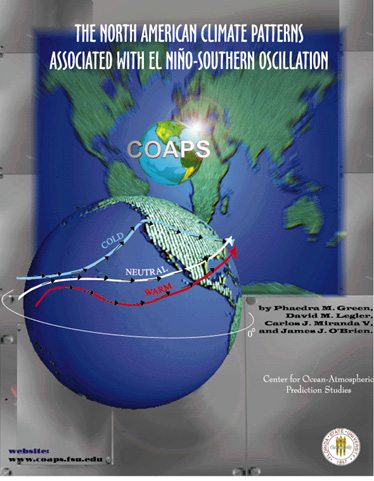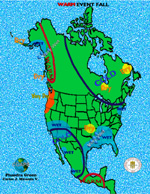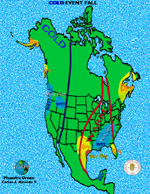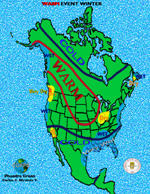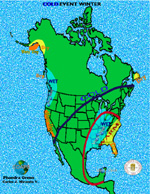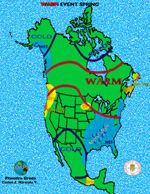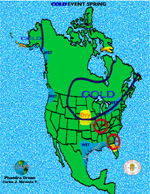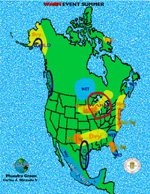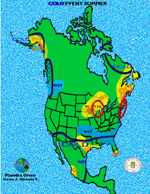INTRODUCTION
Variations in climate and weather can significantly impact our daily lives in subtle ways. We are irrevocably linked to our ecosystem in events resulting from extremely cold winters, crop failure from drought, or emergency conditions such as flooding, heat waves, or forest fires. These events can cause higher heating bills and accelerating food prices. Many of our valuable resources are wasted due to lack of preparation. Effective planning requires study of regional analysis of climatic variability. The largest are the effects associated with El Niņo Southern Oscillation (ENSO).
The phenomenon known as El Niņo has been observed as early as the 1600's off the coast of Peru. At varying intervals, anomalously warm waters off the Peruvian coast appeared around Christmas and were dubbed El Niņo, for the Christ child. The development of the El Niņo phenomenon has its origins in the western tropical Pacific Ocean. Easterly trade winds relax and a westerly wind anomaly develops, exciting eastward propagating Kelvin waves along the equator. These waves suppress the thermocline, deepening the surface mixed layer. As the result, warm sea surface temperature (SST) anomalies develop and spread eastward to the South American coast. Teleconnection links the tropical Pacific and higher latitudes and shift mid-latitude synoptic weather patterns. Today El Niņo is known to be the warm extreme of an interannual climate fluctuation called El Niņo Southern Oscillation. The cold extreme, (La Niņa, El Viejo, cold phase) has consequences of equal or greater importance than the effects of El Niņo.
This document provides the physical climatic effects associated with ENSO on North America. Eight cartoons are included which illustrate the anomalous conditions for the fall, winter, spring, and summer seasons following the onset of the warm or cold ENSO phase.
|
